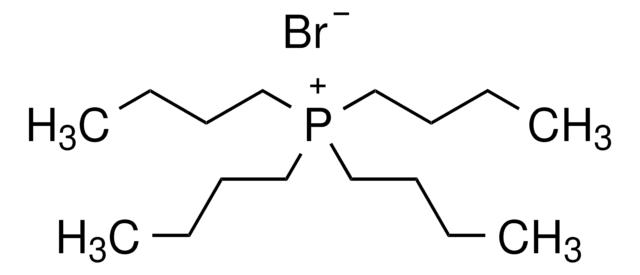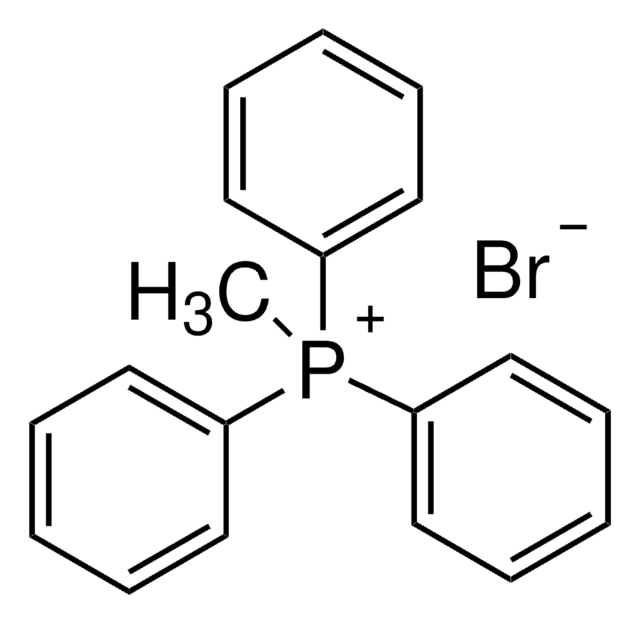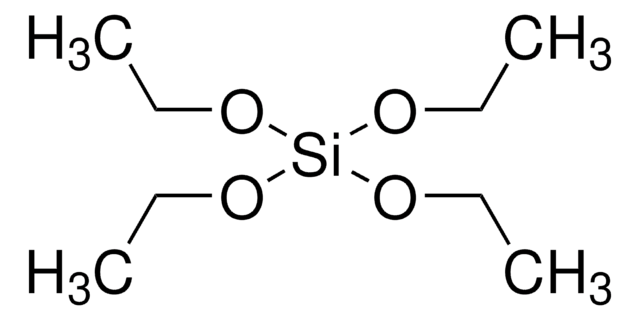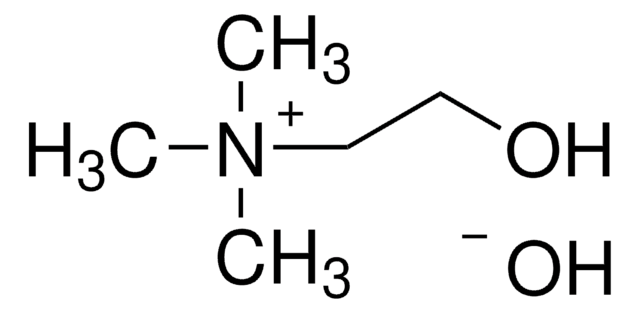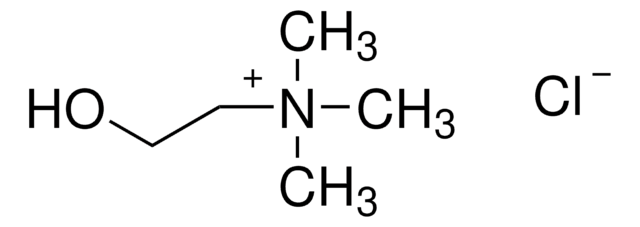438294
Tetrabutylphosphoniumhydroxid -Lösung
40 wt. % in H2O
Synonym(e):
TBPH
About This Item
Empfohlene Produkte
Form
liquid
Qualitätsniveau
Konzentration
40 wt. % in H2O
Brechungsindex
n20/D 1.412
Dichte
0.989 g/mL at 25 °C
SMILES String
[OH-].CCCC[P+](CCCC)(CCCC)CCCC
InChI
1S/C16H36P.H2O/c1-5-9-13-17(14-10-6-2,15-11-7-3)16-12-8-4;/h5-16H2,1-4H3;1H2/q+1;/p-1
InChIKey
DFQPZDGUFQJANM-UHFFFAOYSA-M
Suchen Sie nach ähnlichen Produkten? Aufrufen Leitfaden zum Produktvergleich
Verwandte Kategorien
Anwendung
- To convert poorly water-soluble acidic APIs into TBP ionic liquids (IL).
- As a cation source in the synthesis of Good′s buffer ionic liquids (GB-ILs) via an acid−base neutralization reaction with Good′s buffer anions.
- To synthesize tetrabutylphosphonium acetate, which along with Cu2O-nanoparticles forms an excellent catalyst system for protodecarboxylation reactions.
Signalwort
Danger
H-Sätze
Gefahreneinstufungen
Skin Corr. 1B
Lagerklassenschlüssel
8A - Combustible, corrosive hazardous materials
WGK
WGK 3
Flammpunkt (°F)
Not applicable
Flammpunkt (°C)
Not applicable
Persönliche Schutzausrüstung
Faceshields, Gloves, Goggles, type ABEK (EN14387) respirator filter
Analysenzertifikate (COA)
Suchen Sie nach Analysenzertifikate (COA), indem Sie die Lot-/Chargennummer des Produkts eingeben. Lot- und Chargennummern sind auf dem Produktetikett hinter den Wörtern ‘Lot’ oder ‘Batch’ (Lot oder Charge) zu finden.
Besitzen Sie dieses Produkt bereits?
In der Dokumentenbibliothek finden Sie die Dokumentation zu den Produkten, die Sie kürzlich erworben haben.
Kunden haben sich ebenfalls angesehen
Unser Team von Wissenschaftlern verfügt über Erfahrung in allen Forschungsbereichen einschließlich Life Science, Materialwissenschaften, chemischer Synthese, Chromatographie, Analytik und vielen mehr..
Setzen Sie sich mit dem technischen Dienst in Verbindung.